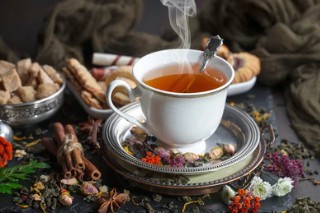
The aroma components in tea are composed of numerous volatile substances. There are about 300 aroma components found and identified in tea, including alcohols, aldehydes, ketones, acids, esters, lactones, phenols and their derivatives, heterocycles, hydroxides, sulfur compounds, and oxygenated compounds in more than ten categories. The number of tea aroma components is related to tea tree varieties, cultivation methods, soil quality, altitude, and processing methods. In the same kind of tea, such as oolong tea, its aroma composition components are the same. Still, the proportion of its aroma components content is different, while highlighting the aroma characteristics of this type of tea. The absolute content of tea aroma in tea is minimal, generally accounting for only 0.02% of the dry matter. However, when certain methods are used to extract the aroma components in tea, the tea will be tea-free, so the aromatic substances in tea have an essential role in forming tea quality.
The aroma of tea can be divided into two categories: aroma, which is mainly composed of volatile compounds, and taste, which is mainly composed of non-volatile compounds. Volatile aroma is an important indicator to evaluate the quality of tea leaves. As a recognized leader in the field of tea testing, Lifeasible can develop the best solutions to detect a wide range of volatile compounds in different types of tea samples, including:
The aroma substances in tea are extremely small, varied, and highly variable. We offer cutting-edge analytical and testing techniques to study tea aroma components and their influencing factors. Our proven aroma extraction component technology ensures reliable tea aroma analysis results. The following is our tea aroma composition extraction and testing methods:
| Tea Aroma Components Extraction Methods | Tea Aroma Components Detection Methods |
Among them, the most commonly used headspace solid-phase microextraction (HS-SPME) is simple in operation, with low equipment requirements, no solvent required, and integrates sampling, extraction, and concentration; the extraction of heat-sensitive components is more adequate, and the aroma reduction is better. |
|
In cooperation with our experienced team of experts, we offer tea sensory review and gas chromatography-mass spectrometry techniques for detecting aroma components, combined with a variety of statistical analysis methods to help you systematically analyze the chemical quality of tea aroma. We can detect more than 700 kinds of volatile compounds, aiming to provide a scientific basis for tea aroma quality evaluation and product quality improvement. If you are interested in our solutions, please contact us for technical consultation and quotation.
Reference
Lifeasible has established a one-stop service platform for plants. In addition to obtaining customized solutions for plant genetic engineering, customers can also conduct follow-up analysis and research on plants through our analysis platform. The analytical services we provide include but are not limited to the following:
STU-CRISPR System Improves Plant Genome Editing Efficiency
April 19, 2024
Application of Exosomes in Facial Beauty
April 12, 2024